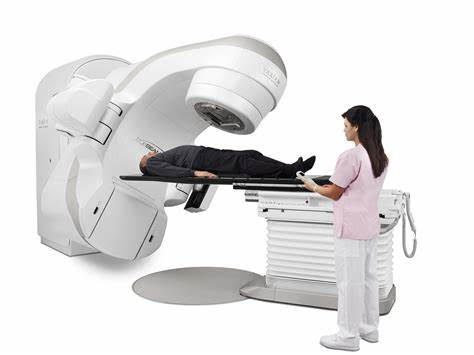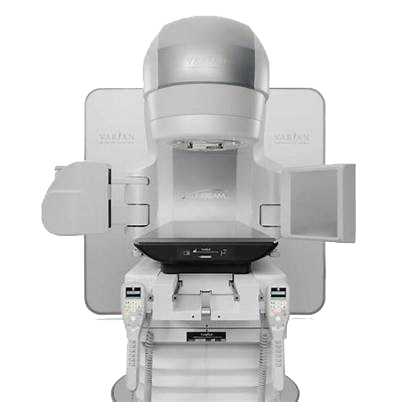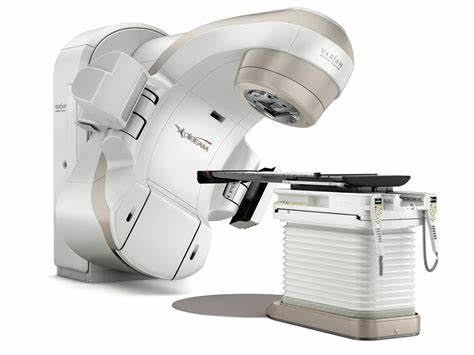Cancer Radiation Therapy at Oncology Nevada
Radiation therapy is a commonly used tool to treat many types of cancer. It may be used as the only therapy or in combination with surgery or chemotherapy. The goal of cancer radiation therapy is to deliver high doses of radiation to cancer cells while limiting injury to surrounding normal tissues.
Fortunately, in contrast to cancer cells, normal cells have the capacity to repair themselves after radiation so long as they are not exposed to too much radiation at once. This is why we give our patients radiation therapy over several weeks, rather than all at once. The regenerative characteristic of normal cells, coupled with improvements in techniques to target the cancer and limit the dose to normal tissue, has ushered in a modern era of cancer radiation therapy with excellent cure rates and limited complications.



Which Cancer Radiation Therapy is Right for me?
The cancer radiation therapy techniques we use include low dose rate (LDR) and high dose rate (HDR) brachytherapy, stereotactic radiosurgery (SRS) and stereotactic body radiation therapy (SBRT). Brachytherapy is delivered via small radioactive sources inside the body, while SRS and SBRT are forms of external beam radiation, delivered from outside the body.
The use of cancer radiation therapy is complex, and no single form of treatment is the best solution for every patient. When considering which treatment is appropriate for a given patient, we consider the characteristics of the cancer and the individual health factors of the patient.
Brachytherapy (from the Greek word “brachy,” meaning “short distance”) involves placing radioactive material inside or near a tumor. This allows radiation to conform to the size and shape of the tumor or organ while minimizing radiation to the rest of the body.
LDR (Low Dose Rate) brachytherapy is the most common form of brachytherapy used in prostate cancer radiation treatment. It involves an outpatient surgical procedure where tiny radioactive particles smaller than a grain of rice (called “seeds”) are implanted directly into the prostate. Each seed emits radiation to a distance of approximately 3mm around it and remains in the prostate as an inert shell. LDR brachytherapy can be used in conjunction with external beam therapy if higher doses of radiation are required.
HDR (High Dose Rate) brachytherapy involves placing tiny hollow plastic catheters into or near a tumor. In the case of prostate radiation therapy, the catheters are placed into the prostate in the operating room under anesthesia. Radiation treatments are then given via the catheters. A computer-controlled machine pushes a single highly radioactive iridium seed into the catheters one by one.
Because the computer can control how long this seed remains in each of the catheters, we are able to manage the radiation dose in different regions of the prostate. This control enables us to give the tumor a higher dose while sparing healthy surrounding tissues, including the bladder and rectum. Once the treatment is completed, the catheters are removed, leaving nothing in the prostate. Like LDR brachytherapy, HDR brachytherapy can be used in conjunction with external beam therapy in select patients.
Stereotactic radiosurgery (SRS) and stereotactic body radiation therapy (SBRT) are forms of external beam therapy, delivered from the outside the body.
SRS is a form of cancer radiation therapy that is given in a single dose. SBRT, sometimes called SABR (stereotactic ablative body radiation therapy) involves up to five treatments. These treatments are used in cases where the cancer is in only a small number of locations and is adequately small to safely deliver a larger dose in a shorter period of time.
Prostate Radiation Therapy
Prostate cancer is the second leading cancer diagnosis among men and the second most common cancer diagnosis overall. The good news is, advancements in radiation treatments have led to favorable survival rates for men with prostate cancer, especially when detected early.
In the case of prostate cancer, radiation treatments must be administered in a way that adequately covers the entire prostate with an accurate, effective dose of radiation. This is challenging due to the fact that prostates are irregularly shaped and vary in size. Inadequate or inaccurate treatment will lead to survival of cancer cells in the prostate (termed “local failure”) or excessive radiation dose to normal tissues in close proximity to the prostate gland, such as the hip bones, bladder, urethra, rectum and nerve bundles.
Prostate radiation therapy can be administered using either brachytherapy or external beam radiation. Depending on the aggressiveness and stage of the cancer, we may determine that one approach is better than the other for the patient, and sometimes we may recommend combining the two approaches.
Prostate Spacer for Radiation Therapy
A little space before prostate radiation can make a big difference after. In a clinical study, SpaceOAR Hydrogel was shown to help minimize the impact on urinary, sexual and bowel quality of life for prostate cancer patients undergoing radiation therapy.



